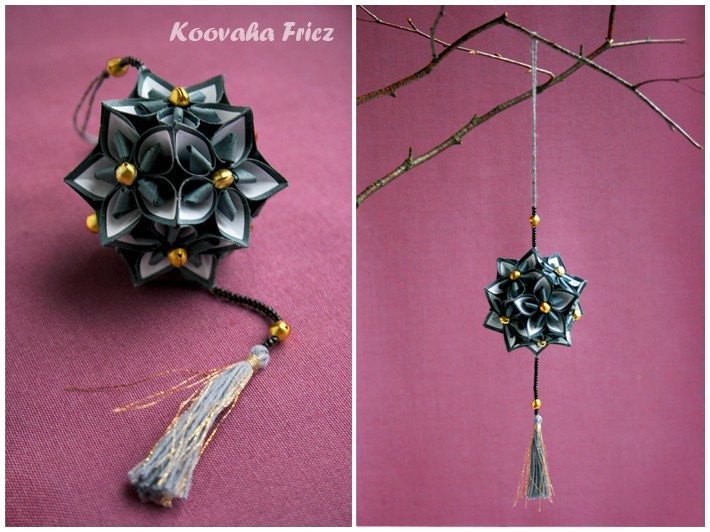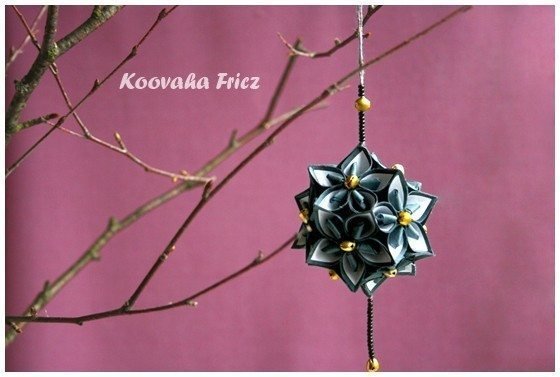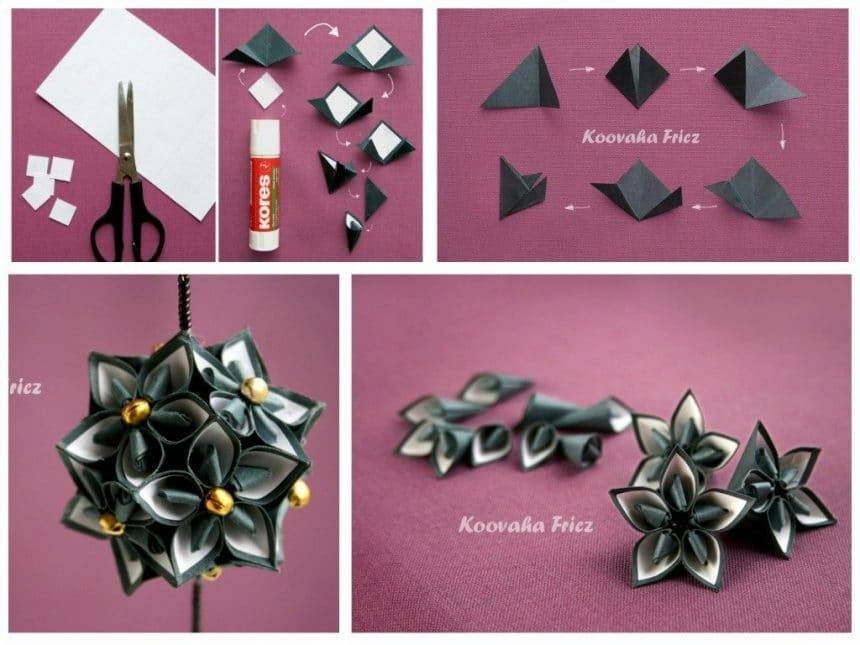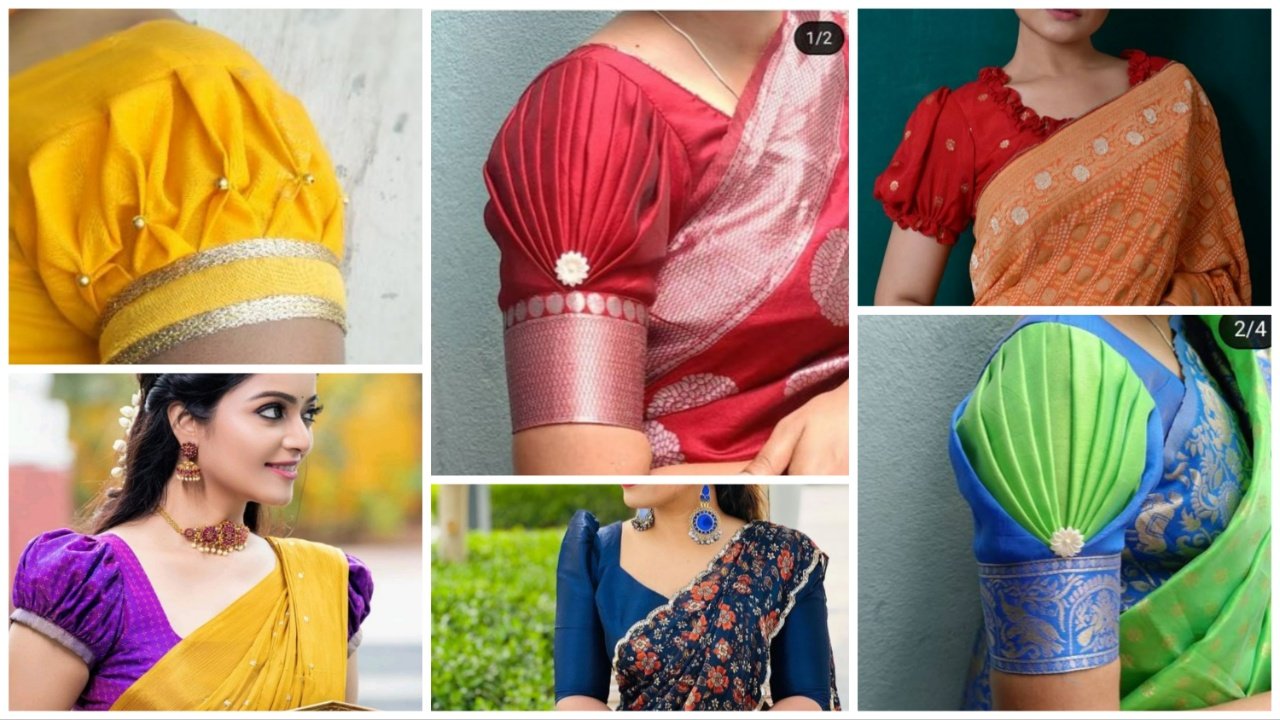Japanese tradition Kusudama
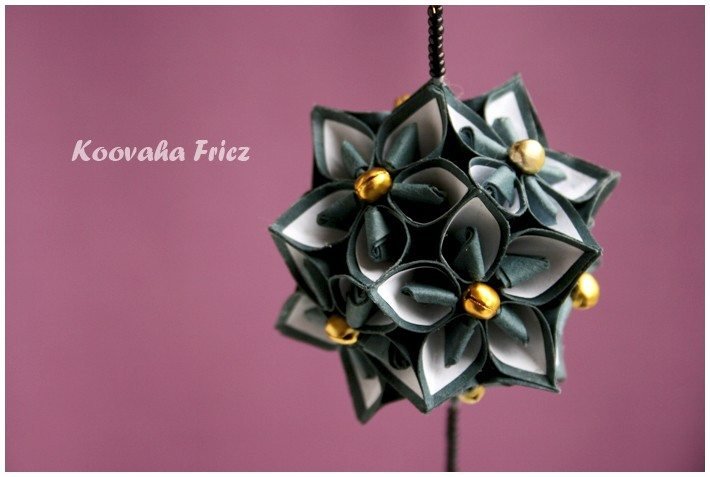
Last year I had a chance to make a present Kusudama – Japanese paper ball, which is going in the manner of origami, and I decided why not removed for one kind of craft
The name “Kusudama” Japanese literally translates as “medicinal ball.” In ancient Japanese tradition Kusudama used for medicinal charges and incense in the modern world – is the art of creating balloon, which are assembled from a plurality of identical paper motifs. They are usually used as decorations for the home or as gifts. Initially the individual modules are connected by cross-linking, but now they are more accepted peck. In addition modern masters of origami developed new designs Kusuda, which can be assembled completely without glue or thread – balls are much more interesting to do, but today I’ll show you how to make a ball on the glue. It is called the «Morning dew» (Morning Dew) – is one of the most famous and ordinary Kusuda. I’m a little bit improved standard assembly diagram, so the list of materials longer than usual. So, for the manufacture of ball you need:
1. Leaf solid colored paper A2 format (a density of about 160 g / cm3);
2. Sheet plain paper A4;
3. Threads:
conventional sewing;
gold;
thick x / w thread (such as yarn, “Iris”).
4. Small bells and beads;
5. Ruler, pencil, scissors, glue and PVA glue stick.
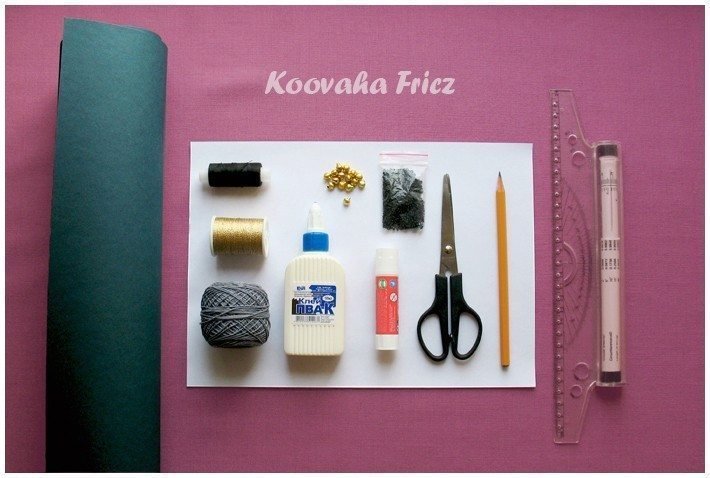
Take a thick colored paper with a ruler and pencil rascherchivaem squares 4.5 x 4.5 cm. The squares can be of any other convenient size to you, but because I wanted to make a small ball – choose squares with sides 4.5. Such squares we need 30 pieces. After squares cut, we cut them diagonally to get 60 triangles like these:
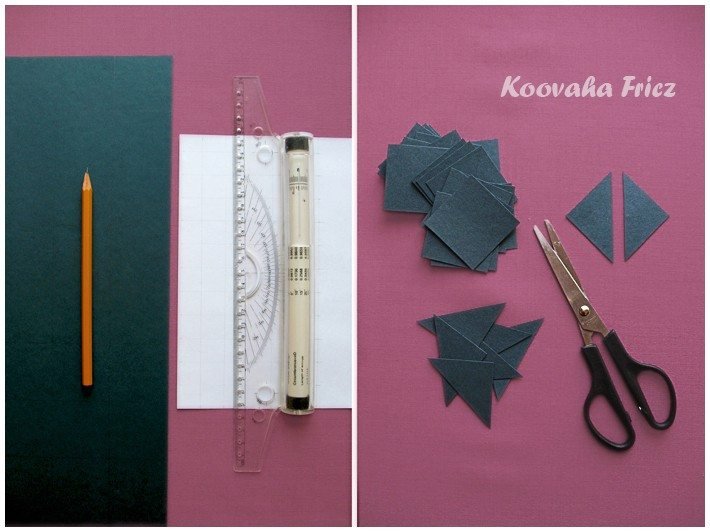
Next, add up each triangle of the scheme:
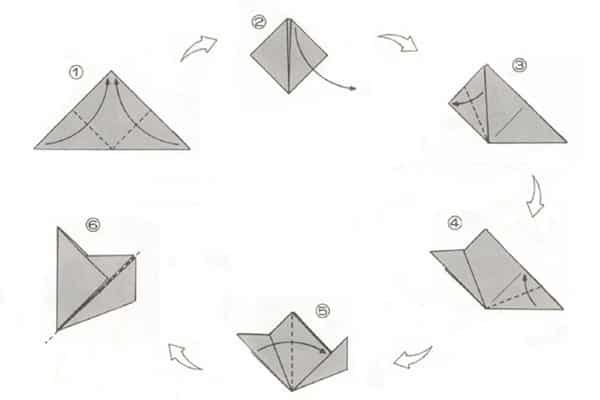
Visually it looks like this:

Then take a sheet of plain paper her 60 squares with sides 1.8 cm. (If you cut out the squares of colored paper is not 4.5 x 4.5 cm., And some other size, the size of these white squares will need to pick themselves). Then we take the already folded triangle, decompose it to its original condition and glued to it with glue stick small square, stepping back from the edge of approximately 2 mm. Glue stick better to take to our triangle does not deform after drying.
In the standard scheme of white squares not – I added them to the ball looked interesting, though, you can safely do without them 🙂

Then we put our triangle, following the diagram below. At the end you should get the likeness flower petals:
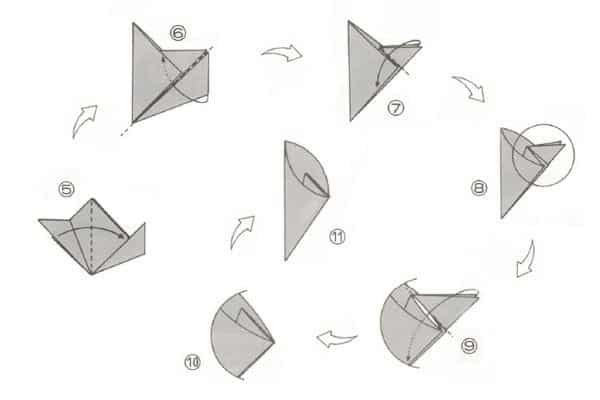
Such “petals” you need 60 pieces. The figure at first glance seems enormous, but somehow it just to learn the principles of folding – it goes very fast 🙂 Then take PVA glue and glue 5 “petals” together, thereby forming flowers.
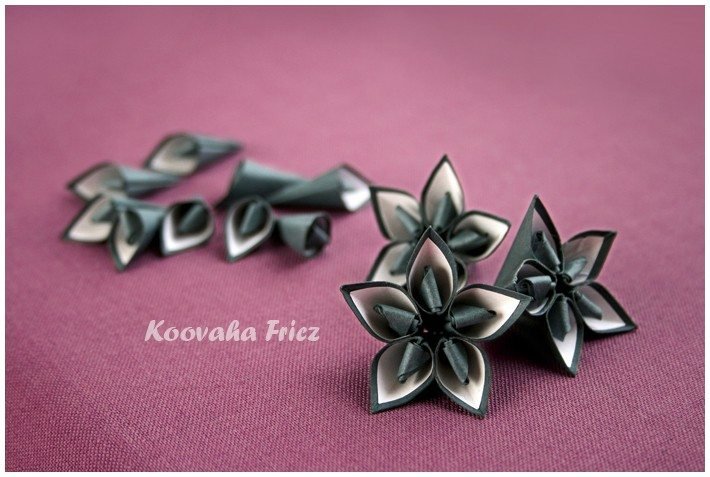
Such flowers should have 12 pieces.
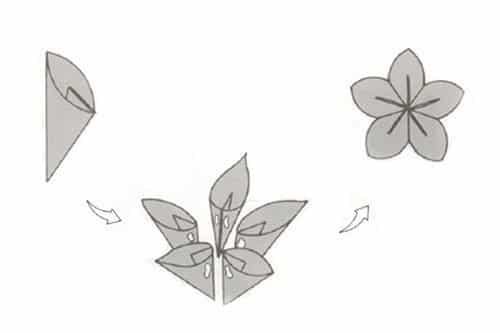
As seen in the diagram, usually petals glued together very tightly, so that the middle of no gap, on the contrary, I glued them together so that there was a small hole – especially in order to place at the center of a flower bell. The bell is necessary to pass a pre-conventional sewing thread and a needle to reach the ends of the thread into a flower.
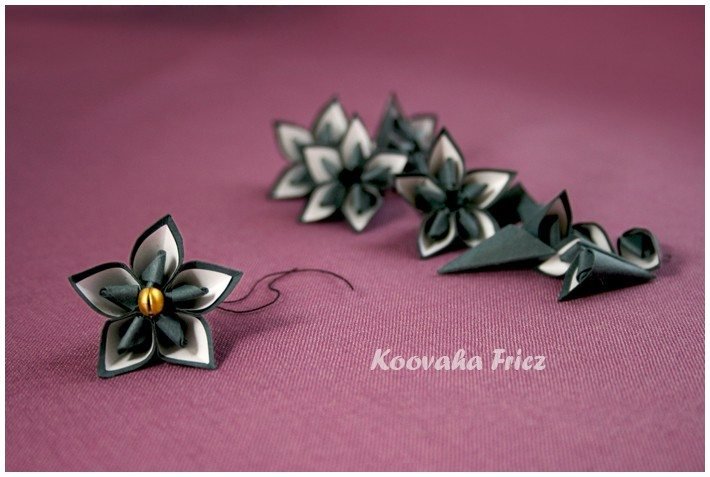
Next you need to glue the flowers in three, and the tips of the thread on which are strung together to tie bells. Such “bouquets” of three flower each should receive 4 pieces.

Then we set them aside to dry up, and in the meantime you need to make a loop with a brush, through which a ball can be suspended. Here are just a handy c / b shnye and gold thread, and a few bells and beads. Acting as tell a fantasy – the length and appearance of the brush can be whatever you want. After the brush is ready you need to take two “bouquet” and glue them together. That would be half of the finished ball. Giving everyone a good dry – glue on the inside of the future Kusudama suspension strung with a brush.
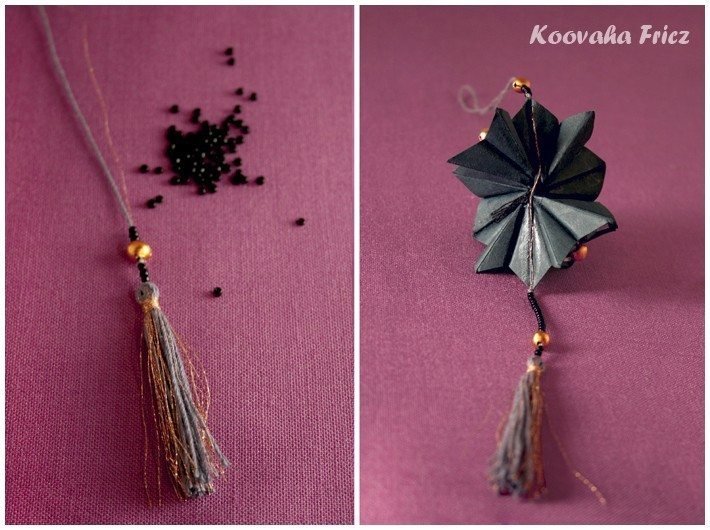
In the scheme of suspension I suggest doing two parts – brush glue alone loop separately. But I’m finding that as more reliable – made solid suspension. Here you need all the fluff good adhesive to the suspension well kept and there was no danger of that in the future the ball under his own, though small, but still, the weight can move out down. Then do a loop, the tip is too closely adhered to the inner side of the ball. Loops can also decorate it a little strung beads and a bell.  After this will only need to paste the remaining 2 “bouquet” and everyone – the ball is ready 🙂
After this will only need to paste the remaining 2 “bouquet” and everyone – the ball is ready 🙂

Are summarized Kusudama was 6 cm.
After a year, I can say that it still looks good, and clings fervently tinkles when it shake 🙂
